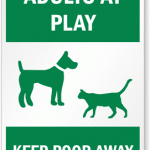Mental health articles
OF mental health care and mentally ill
Choosing the right medicine: cost and efficacy
Throughout the world the cost of health care is rising. Particularly in developing countries, this
means making hard choices about which medicines to prescribe. Many newer medicines are protected by international patent laws. This means that only one company is allowed to produce
that medicine for a certain period of time. These medicines are almost always much more expensive than older medicines. When making a decision on whether to use an older, cheaper
medicine or a newer, more expensive medicine, you must consider these issues:
• the cost of the medicine;
• the efficacy of the medicine (i.e. how good it is);
• the side-effects;
• the income bracket of the family.
Thus, a newer medicine, which may be no better than an older medicine in reducing the symptoms of a mental illness, may have lesser side-effects. This could be very important for some
people. For example, older antipsychotic medicines produce more stiffness and restlessness than newer ones. A person taking an older medicine may feel so restless that he cannot work and,
therefore, cannot earn any money. On the other hand, a person taking a newer antipsychotic may spend more money on the medicines, but because she can work she can more readily afford the treatment than would have been the case with the older medicine.
In choosing medicines, the following situations may arise:
• The older, cheaper medicine is more effective or just as good as than the newer, expensive medicine and there are no differences in side-effects. Recommend the older, cheaper medicine. A good example from drugs for mental illnesses are the choice between amitriptyline and nortriptyline, two tricyclic antidepressants. Whereas the former is cheaper than the latter, they are equally effective and have similar side-effects. Therefore, you should choose amitriptyline.
Many of the newest psychiatric medicines are no different from the ones produced a few years earlier in terms of both side-effects and efficacy. Do not recommend them.
• The older, cheaper medicine is just as good as than the newer, expensive medicine, but there is a greater risk of side-effects with the older medicine. A good example of such a choice is that between older antidepressants, such as amitriptyline, and newer antidepressants, such as
fluoxetine. The former is just as good as the latter but has more side-effects. More people using the former will drop out of treatment because of the side-effects. Another example of such a choice is that between older antipsychotic drugs, such as haloperidol, and newer antipsychotic
drugs, such as risperidone. Two options are available to you. For those patients who can afford the newer medicine, you can offer both options and explain the pros and cons of each. Let the person make the choice. If, on the other hand, the person is from a poorer family, recommend the older medicine. Monitor the person’s progress; if severe side-effects appear, switch to the newer medicine.
• The newer, more expensive medicine is more effective than the older medicine. In this situation, you should ideally recommend the newer medicine. However, if the person cannot afford the
new medicine, the older medicine may be given a trial. If it works well, there is no need for change. If it does not work well, then the newer medicine may be the only choice left. An
example of such a choice is between older antipsychotic drugs and newer ones. Thus, risperidone may produce better results in people with schizophrenia than chlorpromazine.
Post Footer automatically generated by wp-posturl plugin for wordpress.
More from my site
Tags: medicine







Leave a Reply